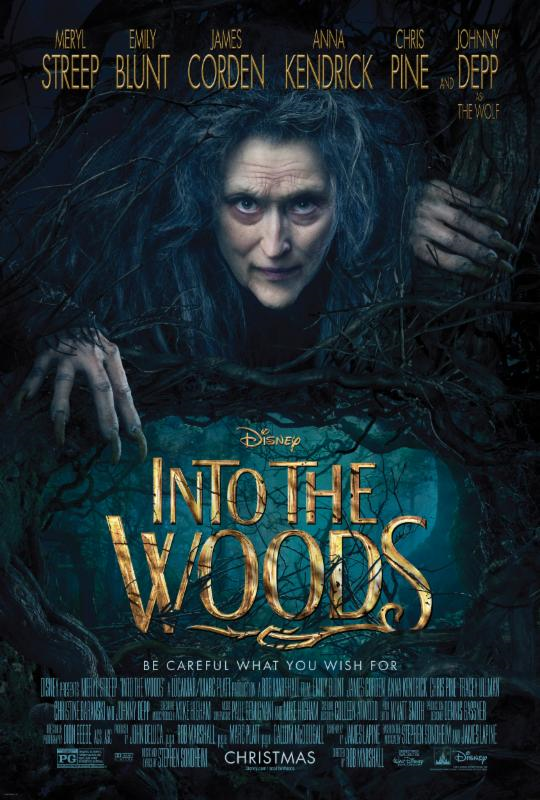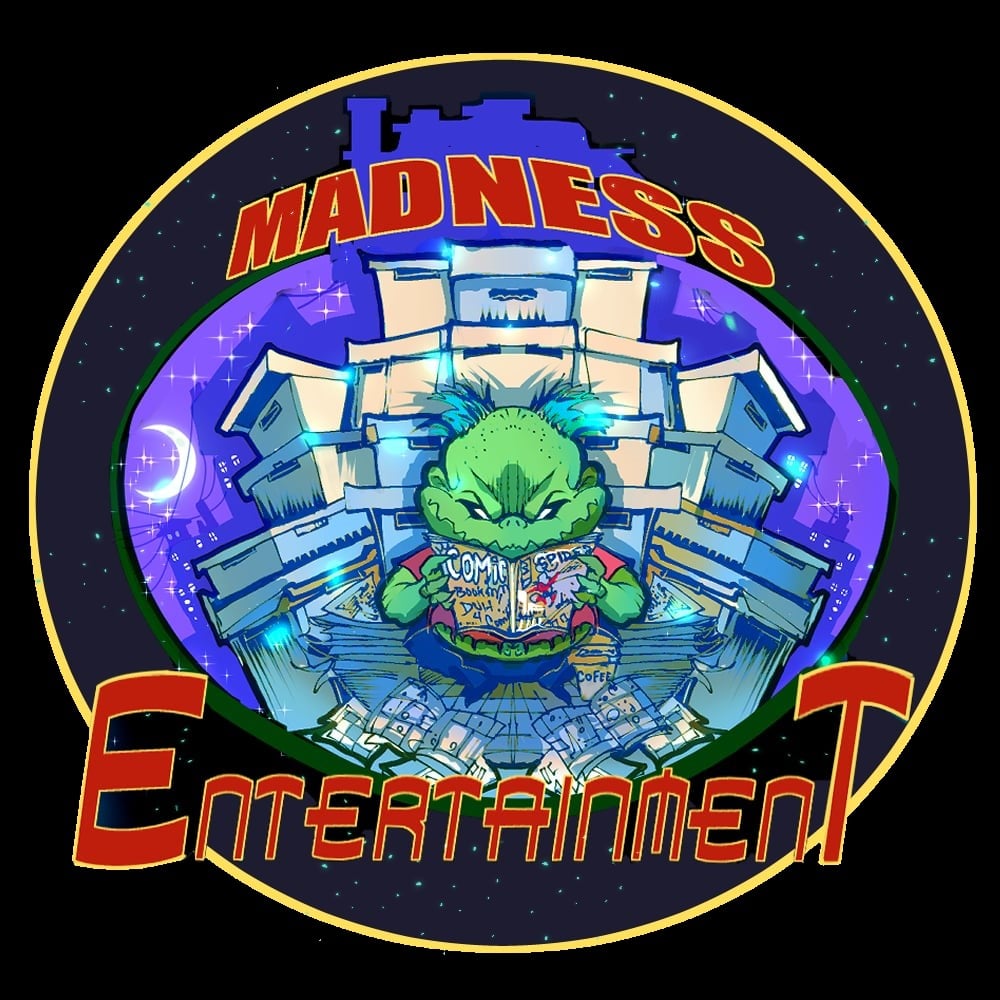Into the Woods Doesn't Go Deep Enough
FTC Statement: Reviewers are frequently provided by the publisher/production company with a copy of the material being reviewed.The opinions published are solely those of the respective reviewers and may not reflect the opinions of CriticalBlast.com or its management.
As an Amazon Associate, we earn from qualifying purchases. (This is a legal requirement, as apparently some sites advertise for Amazon for free. Yes, that's sarcasm.)

Reviewing a film based on a musical that I haven't seen is an interesting beast. I can't really compare it to the original play so I have to review it based on what I see. So, I might dislike elements from the movie that could be completely different in the original. Please note: I am reviewing the film.
Into The Woods is a modern twist on various fairy tales. It combines some well-known ones with an original storyline involving a baker and his wife (played by James Cordon and Emily Blunt) who find out they are childless due to their next-door neighbor, a witch (played marvelously by Meryl Streep - is there any role she can't play marvelously though?) She admits that they are barren because she cursed their house after some ill feelings she had towards the Baker's father. They must bring her, "The cow as white as milk, the cape as red as blood, the hair as yellow as corn, and the slipper as pure as gold" in three days time at the blue moon so the curse can be lifted. Then they shall have their much-wished-for child.
Convincing or conning various fairy tale characters out of these items turns into quite a challenge. The Baker's wife is resourceful and clever, though, while her husband wrings his hands over the guilt from being the root cause of their unhappiness. Sometimes he blames it on his father, but he is generally guilt-ridden throughout the film. Meryl Streep's witch character is supposed to be the villain, but the viewer begins rooting for her. Particularly when she shows up to berate the baker to stay focused on the task at hand.
Aside from this new story, the old fairy tales all have a slightly different take on them. Jack from "Jack and the Bean Stalk" is a slow lad who is conned out of his white cow for five beans from the Baker's wife. His mother is highly dissatisfied at her son's negotiating abilities. This changes as he starts bringing gold down from the giant's land. But will he be as successful in killing the giant as in the beloved children's tale?
Cinderella's story no longer has one epic night out on the town. Instead, she wants to go to the Festival which is a three night even where Handsome Prince #1 dances with all the lovely ladies in his lands to pick one out to wed. He really enjoys dancing with Cinderella until she bolts. She runs away from him three different times. Does he just enjoy the chase? Does she really like him as a person? Is it love?
In the tale of Little Red Riding Hood, Red stops by the bakery to get some bread for her granny. She skips through the woods trying to heed her mother's advice to stick to the path and not to dawdle. The big, bad wolf (Johnny Depp) tries to distract her from her mission so he can gobble up her tempting flesh. There's singing. (This is something I want to discuss later with musical numbers.)
Finally, Rapunzel doesn't know her true identity but mistakenly believes the witch to be her mother. The "mother" just wants to wall her off in a castle and protect her from the big, bad world. Handsome Prince #2 spies her from afar and decides to woo her. The witch isn't going to be happy about this new development.
Since this is a musical, there's a great deal of singing. Two songs stood out the most. One was Johnny Depp singing to Little Red Riding Hood while he stalked her. I've heard that the original scene from the musical is much more sexually explicit. Disney definitely toned it down. I would say that the sexual overtones are definitely there, but little kids probably wouldn't pick up on them. However, I think they may have decided to pick a prepubescent girl to play alongside a fairly older middle-aged man hoping that would help make the situation less sexual. In my opinion, it didn't help. It just made it creepier to the viewers picking up on the innuendo. Since in the original fairy tales, Little Red Riding Hood's red cloak was either a symbol of a female's first period or loss of virginity, I think it's going to be on some viewer's minds. The other musical number that was notable was the Handsome Prince #1 and #2 singing "Agony". It becomes a pissing contest of sorts as they each try to make their romantic plight seem worst. There's some melodramatic singing as they pose provocatively. Chest hair becomes involved. It's hilarious and a well-needed break from weird wolf songs about wanting little girls' bodies... to eat.
This modern adaption isn't far off from Love Actually with its intersecting plots, common themes, and treatment of women (despite its attempts at being a modern adaptation with some of the original gruesome elements.) Of course the similarities do end there. This is a musical that fancies itself a daring fairytale adaption not a romantic comedy.
At some point deep into the film, a tragic event befalls the cast. Since the characters all have intersecting storylines where they propel each other toward their destinies, nobody will take responsibility. Interestingly enough, the character who finally takes responsibility is the witch who is supposed to be the villain. Or maybe she isn't. It's difficult to say who are the protagonists in this film.
Much is made of the relationships of children with their parents. The Baker is reluctant to enter fatherhood because of his own father deserted him. Rapunzel has to decide whether to escape from the cozy prison her "mother" made into the unknown. Red struggles to follow her mother's advice. Is it better to learn from listening to others who have suffered through trials... or to learn by actually doing? Cinderella hates her life and wonders why she is doomed to clean the house for her ungrateful stepmother and stepsisters. She sings, "Mother said 'Be good'. Father said 'Be nice.' That was always their advice... what's the good of being good when everyone else is blind?" It's hard for her to come to grips with the advice of her deceased parents - being good isn't helping her situation at home.
There are many additions to this film that differ from a classic Disney princess story. One of them is Cinderella's chaffing at her parents' advice. In our society, little girls are always told to be nice. That's a most important trait. The witch also touches on this. She sings, "I'm not good. I'm not nice. I'm just right." I immediately made connections to the Ban Bossy campaign. So, I was ready to highly approve of this film. I wanted to like it. Without giving away any major spoilers, I can say that a female character more than likely sleeps with a prince. Immediately afterwards, she is punished. This was troubling. I expected a modern fairy tale to not punish female characters for these kinds of behaviors; that is a tired trope. Cinderella, Rapunzel and the witch are all praised for their good looks (or lack thereof). I thought this movie was trying to edge away from Disney Princess archetypes - apparently not far enough
Ultimately, this film was well-done. The visuals were beautiful; the acting was strong. My main problems were with the plot. I was saddened that the filmmakers embraced some of the original gruesome elements (like Cinderella's sisters cutting their feet to fit the shoe), but not all of them like Red's coming-of-age story. Of course they wanted to make sure it was family friendly for Christmas audiences, but fairy tales were originally for children. One could argue that the bedtime stories leave the gruesome factor completely to the imagination of the viewer, but I still think that the human imagination can compete with the big screen. It's worth seeing, but disappointing in its lack of ambition.


